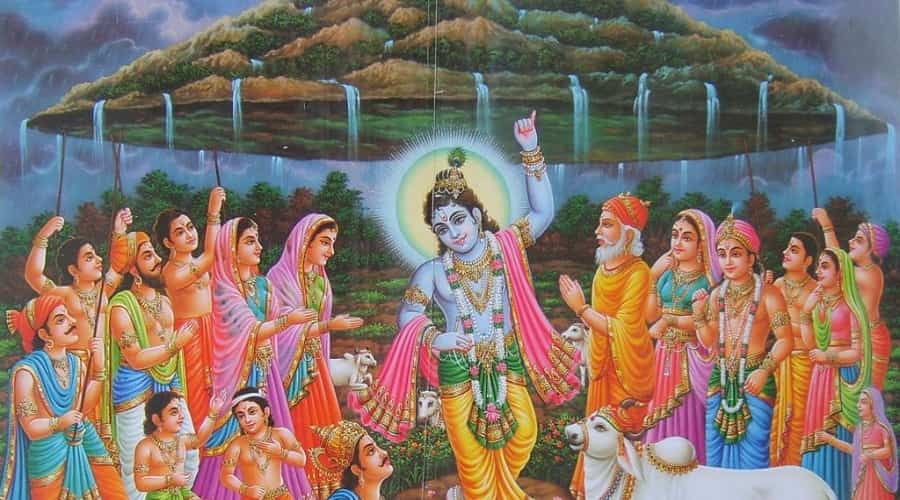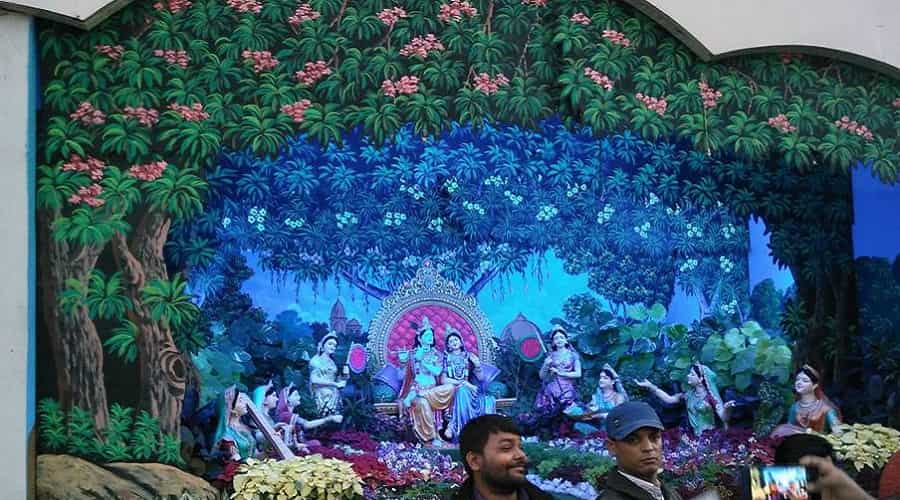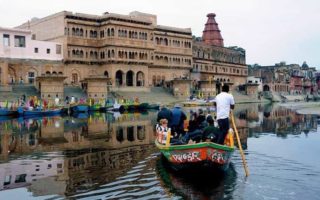Vrindavan is just 11 km from Mathura, the birthplace of Lord Shri Krishna. Located on the Agra-Delhi highway on NH 2, this is Krishnadham, home to temples dedicated to Krishna and Radha. A sacred pilgrimage destination, Vrindavan means a grove of holy Tulsi. Symbolic groves can still be found at Seva Kunj and at Nidhivan.

Ancient heritage
Brij Bhoomi, as it is called by devotees, has an ancient heritage going back 5000 years. Lord Krishna was born in not far away Mathura and Vraj dham, one of its other names, is said to have been a verdant forest bubbling with the joy of life. It is here that on the banks of Yamuna the child Krishna played with Gopis. It is a belief that the divine Lord chose to settle here and brought along with him other divine beings manifested in the form of the Gopis and Vrinda Devi, an avatar of Goddess Lakshmi. Vrinda appears in the form of Tulsi that covered the entire area in the form of twelve sacred forests. These are Bilvavan, Lohavan, Bhandiravan, Bhadravan, Talavan, Madhuvan, Bahulavan, Mahavan, Kumudvan, Khadirvan, Kamyavan and Vrindavan. It is also a belief that the Lord would not accept offerings or food unless they were accompanied with Tulsi.
Mention in ancient texts
Vrindavan finds mention in the Bhagavata Purana where the life of the Lord is mentioned in the many lilas and bhakti. Vrindavan also finds mention in Vishnu Purana where it is mentioned that Lord Vishnu will be reincarnated as Lord Krishna and that Vrindavan will be his holy playground. The Ramayana too is connected with Vrindavan. Tulsidas who wrote it in Hindi visited Vrindavan and visited a temple of Lord Krishna and Radha. He prayed to the Lord to take up the bow and the Lord heard him and put down his flute and took up the bow of Lord Rama. Vrindavan today has a Tulsidas temple at Gyan Gudri. The Mahabharata also has connection with Vrindavan since Krishna grew up here and went on to become the mentor of Arjuna, subsequently reciting the Bhagavata Gita to him. Decades later, Vajranabh, the great grandson of Lord Krishna, was requested by devotees to visit Vrindavan and restore the place where Lord Krishna’s Lilas were played. He arrived at the place and prayed to the Lord who revealed the places to him. Vajranabh put up temples at these Lila places.
Down the Ages
Centuries passed and the temples built by Vajranabh faded into oblivion. It was not until the Mughal era that the site was rediscovered. It was left to Shri Chaitanya Mahaprabhu (considered to be an avatar of Lord Krishna) in 1486 to rediscover Vrindavan. He visited Vrindavan in October 1512 and with his vision he found out the exact places of Lord Krishna’s Lila’s then overgrown with forests. Under his guidance his six Goswami disciples gave the place a makeover, discovered old sites and made it a site of religious pilgrimage once again. They found self appeared (Swayambhu) idols of Gods and installed them in temples. These six temples now constitute the main temples of Vrindavan. These temples are Sri Sri Radha Gopinath temple, Radha Raman temple, Radha Gokulanand temple, Sri Radha Shyam Sunder temple, Shri Radha Damodara temple and Sri Radha Madan Mohan temple. Other famous saints such as Vallabhacharya, Hit Harivash Mahaprabhu and Nimbark Swami Haridas Ji are also associated with Vrindavan.
Srila Prabhupada of ISKCON fame can also be given the credit for emphasizing the holy significance of Vrindavan. He collected devotees from all over the world and brought them to Vrindavan. According to him, the merits of devotion multiply thousandfold here. Even if one commits offences or sin, these are magnified here. Circumambulate Vrindavan and all sins are washed away and it is equivalent to circumambulating 5000 temples.
If you live in Vrindavan, you live next to Lord Krishna.


